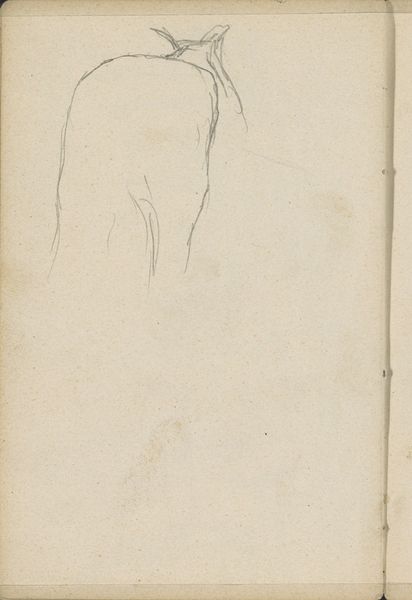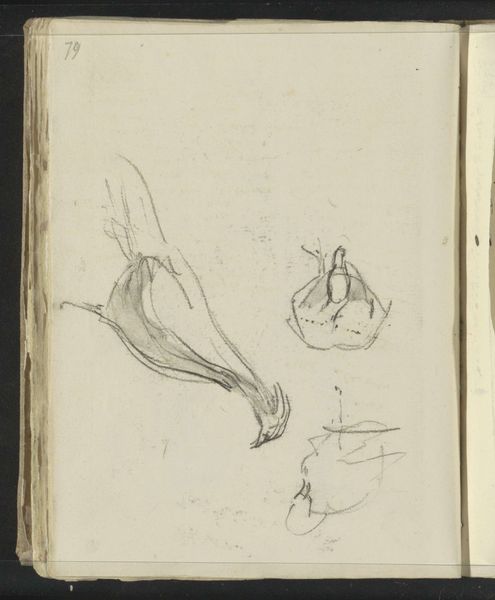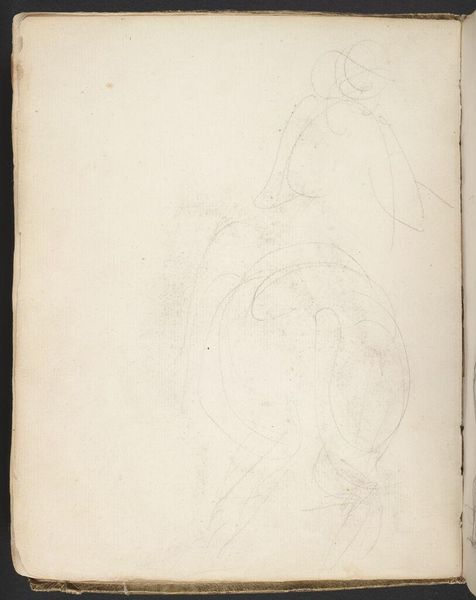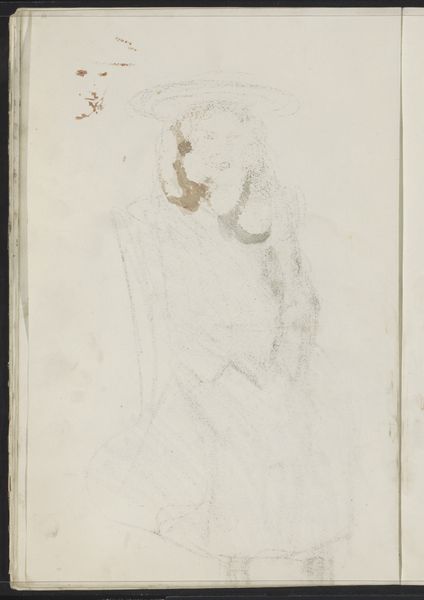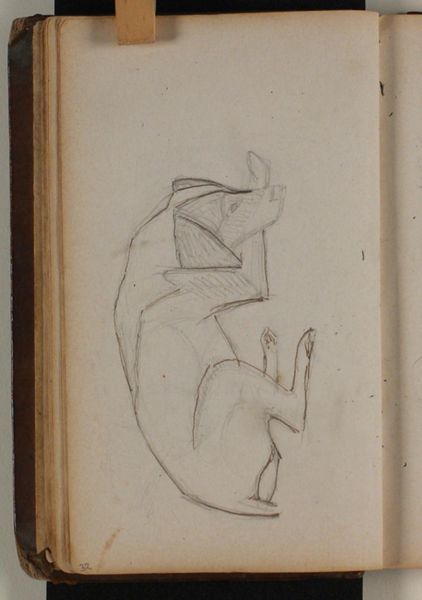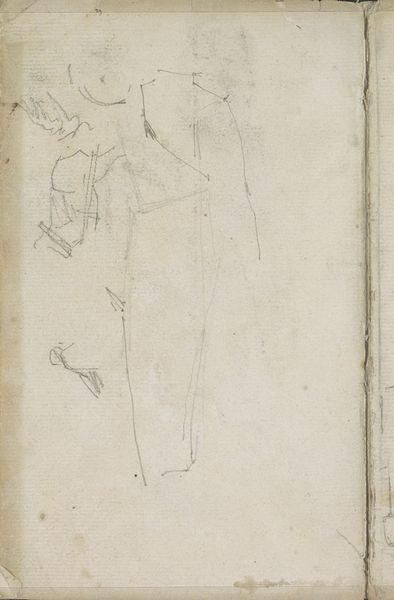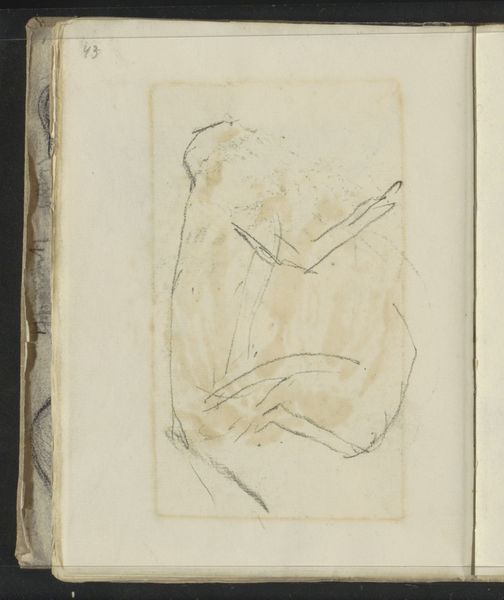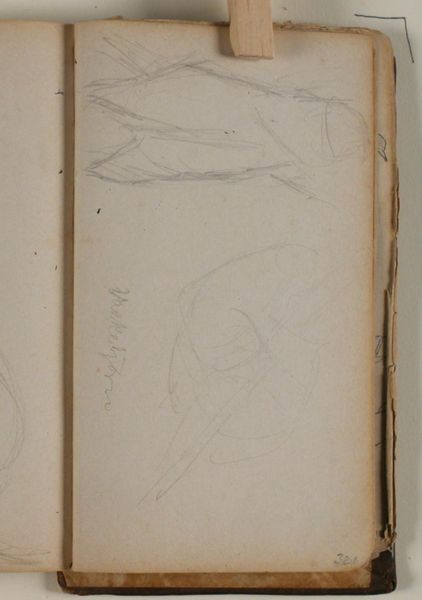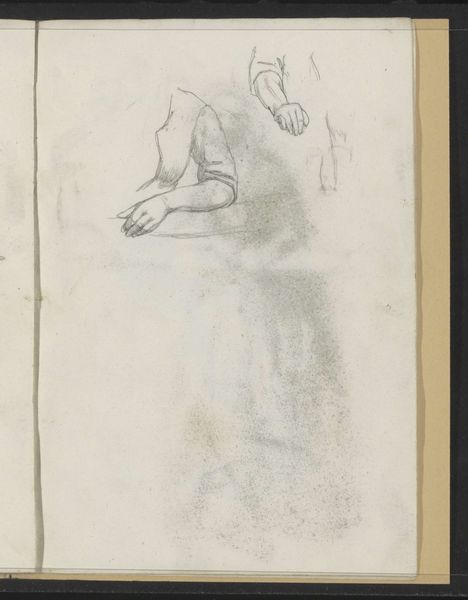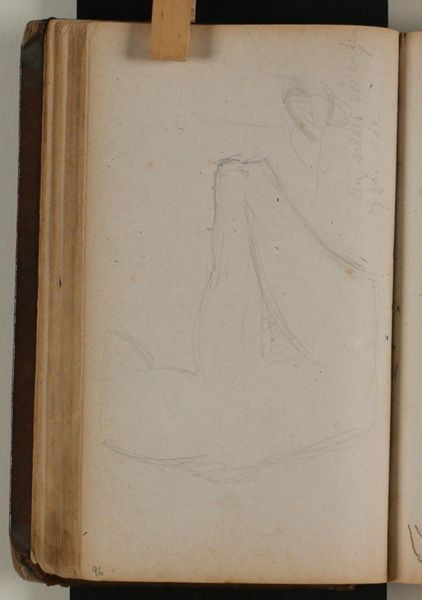
Copyright: Rijks Museum: Open Domain
Curator: Looking at this pencil drawing, "Gedrapeerde Stof," created by Jozef Israëls circa 1855-1859, currently held at the Rijksmuseum, my immediate thought is one of simplicity and quiet observation. It seems to capture a moment, a fleeting glimpse of fabric. Editor: It's quite spare, isn't it? The romantic period often gets tagged with heightened emotionalism and drama, but this study feels very…contained. Perhaps that's the nature of a preparatory sketch; one element, the draping, singled out for detailed consideration. Was Israëls looking for something specific? Curator: Israëls' place within the socio-political context of Dutch Romanticism and later, the Hague School, is critical to understanding these "slice-of-life" images. His focus often involved elevating the working class, and finding dignity in the everyday. How might a drawing like this reflect broader narratives about societal fabric, quite literally? Editor: He was exploring visual language, documenting elements that interested him. Romanticism certainly encompassed attention to light, shadow, and the texture of things. What can we surmise from this particular piece of draped fabric, though? Is it symbolic of something larger in the society of the time? It looks like a preliminary sketch with frottage on paper that explores light. Curator: Possibly. Material culture certainly tells us about class, gender, and economics, however, at first glance, there doesn't appear to be enough information about the fabric, where it's found, how it is used to determine such significance. It simply appears as a practice for a greater painting with the fabric as set-dressing. It speaks volumes that an artist of his caliber would spend time understanding something as basic as the way a cloth falls. Editor: True. His engagement with this modest subject implies dedication to the craft, to really seeing. In an era when paintings aspired to grand narratives and historical scenes, such focus brings things to eye level, and perhaps even empowers the commonplace in society. It reminds us that observation, in art and in social justice, is the first step. Curator: Exactly! We can read an implicit message about valuing all components of experience, not only the traditionally "important." The draped fabric serves as an almost humble reminder of our engagement within social contexts. Editor: Well put. I see the sketch as quiet dedication now, both artistically and sociopolitically.
Comments
No comments
Be the first to comment and join the conversation on the ultimate creative platform.
